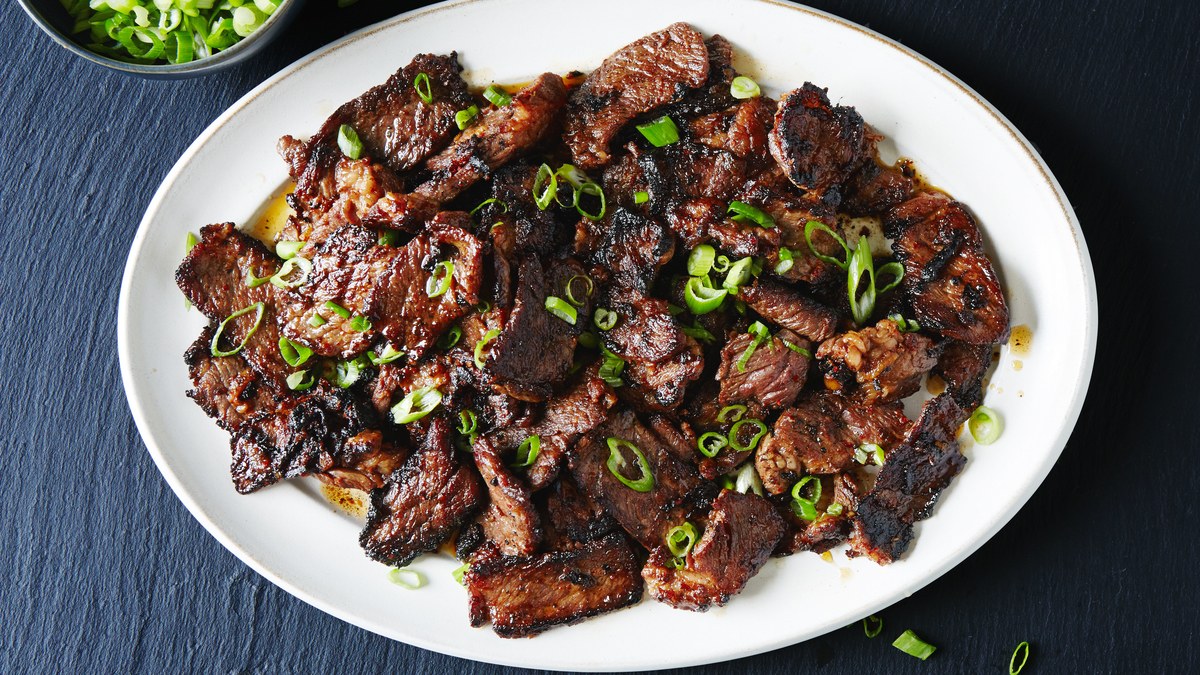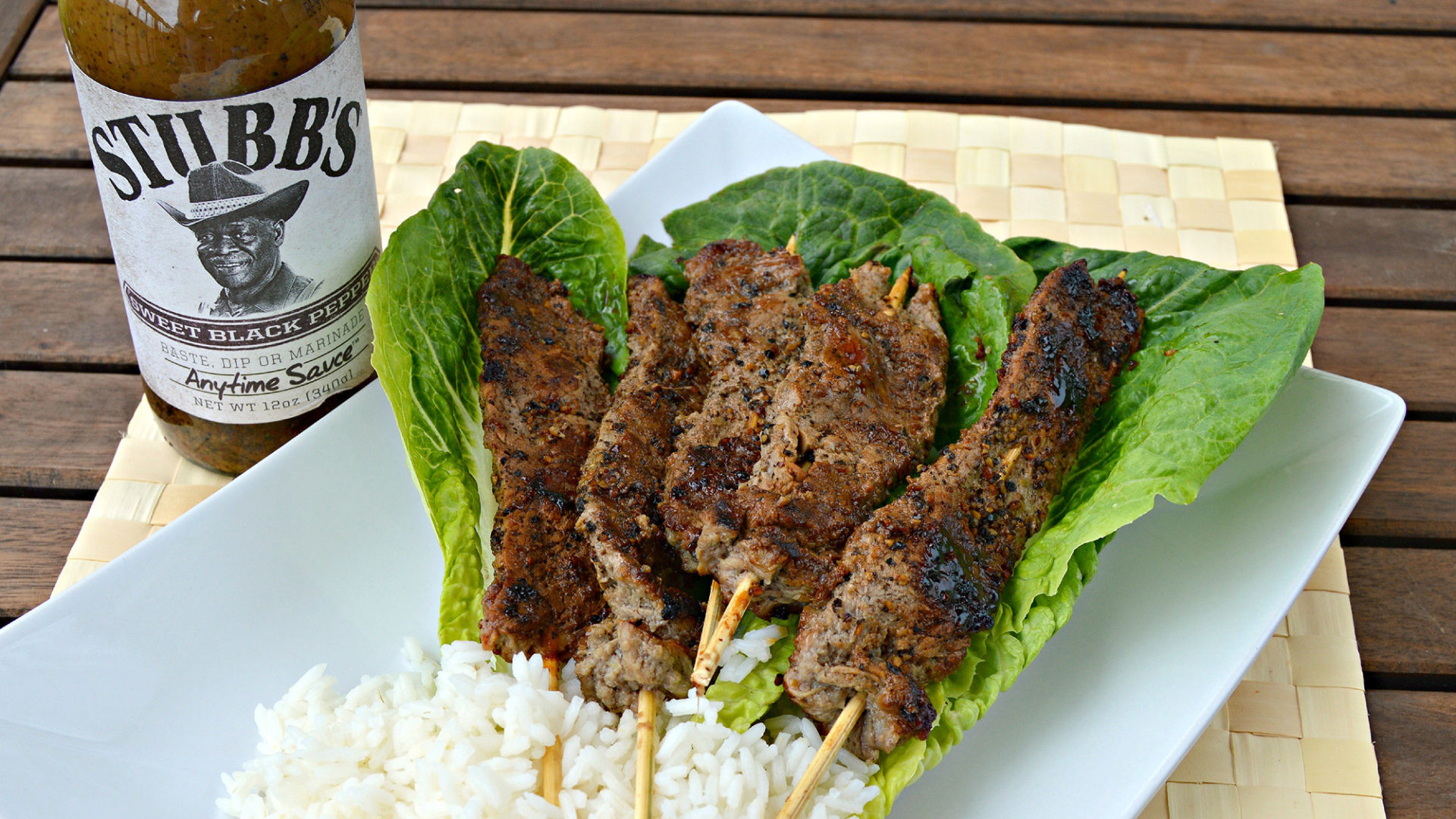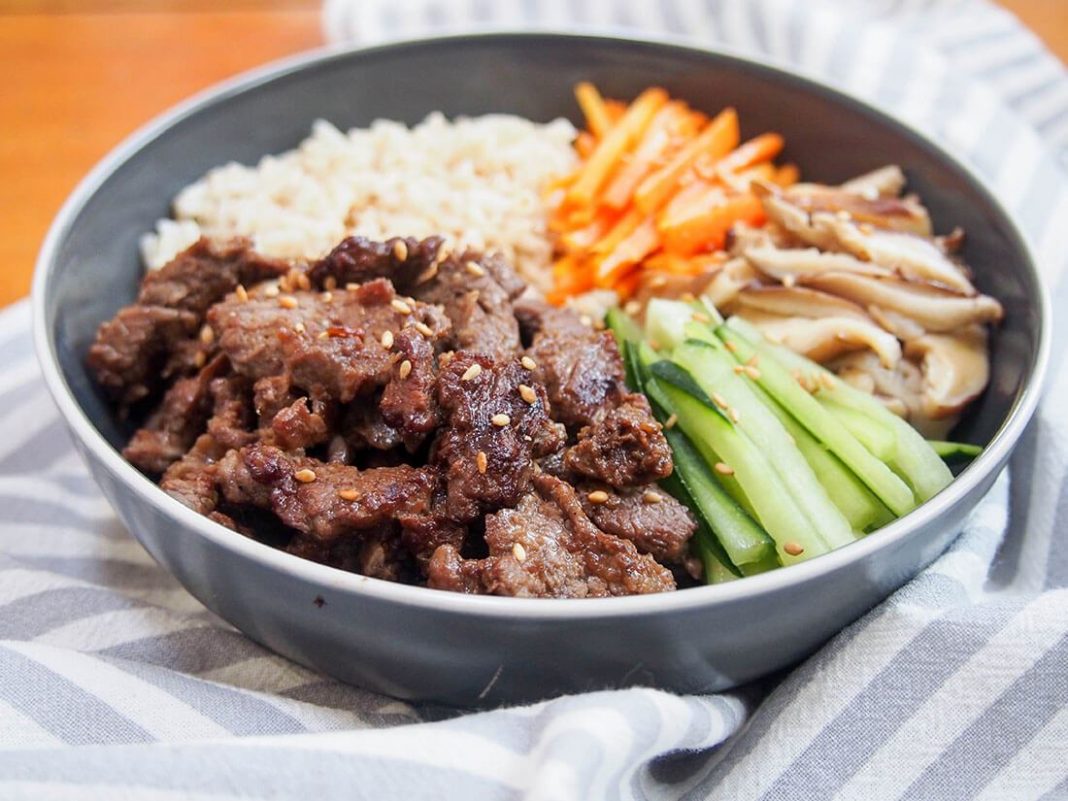The dish originated from northern areas of the Korean Peninsula but is a very popular dish in South Korea where it can be found anywhere from upscale restaurants to local supermarkets as pan-ready kits.
Bulgogi is believed to have originated during the Goguryeo era (37 BCE–668 CE), when it was originally called maekjeok, with the beef being grilled on a skewer. It was called neobiani, meaning “thinly spread” meat during the Joseon Dynasty and was traditionally prepared especially for the wealthy and the nobility. In the medieval Korean history book Donggooksesi, bulgogi is recorded under the name yeomjeok, which means ‘fire meat’. It was grilled barbecue-style on a hwaro grill on skewers, in pieces approximately 0.5 cm thick. Although it is no longer cooked skewered, this original type of bulgogi is today called bulgogi sanjeok.

In addition to beef, chicken and pork are also one of the most common types of variations used to prepare the dish. Pork belly, or samyeopsal in Korean, is a popular cut for pork bulgogi.
Before cooking, the meat is marinated to enhance its flavor and tenderness with a mixture of soy sauce, sugar, sesame oil, garlic, ground black pepper, and other ingredients such as scallions, ginger, onions or mushrooms, especially white button mushrooms or matsutake.

In most cases when cooking Bulgogi, these are common ingredients. However, the ingredients used to marinate the meat can vary from chef to chef and even from family to family depending on one’s preferences and traditions. Pureed pears, pineapple, kiwi, and onions are often used as tenderizers.
Sugar or other types of sweeteners such as Coca-Cola may sometimes also be used to add a sweeter taste. The length of time in which the meat is left to marinate also varies depending on preferences. Generally, bulgogi meat is left to marinate for less than an hour but many top chefs will even leave it overnight for the best taste. Sometimes, cellophane noodles are added to the dish, which varies by the region and specific recipe.









